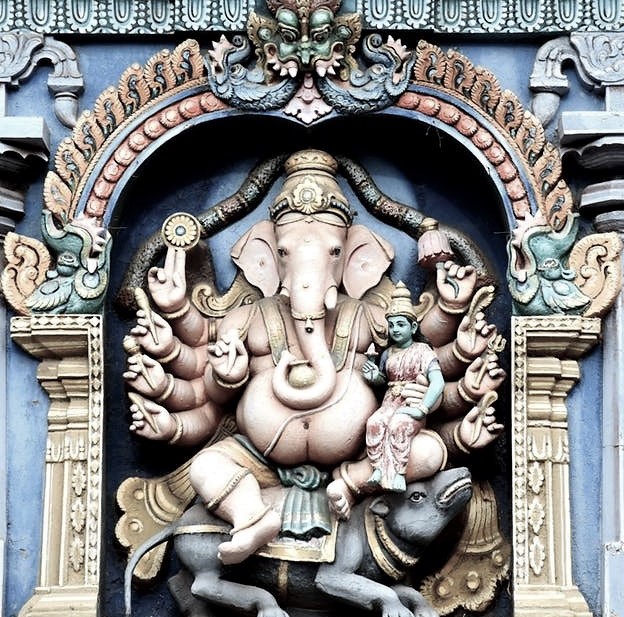- Special FeaturesFoundation YearSthala TreeTheerthamRathamArchitectureDravidianOther SpecialityIt is mentioned in the hindu scriptures that the deity in the Kanakadurga temple is regarded as 'Swayambhu' or self-manifested, hence considered very powerful. The temple occupies an important place in the scriptures as several of the Siva-leelas and Shakti-mahimas were enacted on or around it, making the region a place of unequaled spiritual significance and attracting pilgrims since times immemorial.
- Sthala Puran
According to a legend, the now verdant Vijayawada was once a rocky region strewn with hills that obstructed the flow of River Krishna. The land was thus rendered unfit for habitation or cultivation. Invocation to Lord Shiva for His intervention directed the hills to make way for the river. And the river started flowing unimpeded with all its might, through the tunnels or "Bejjam" bored into the hills by Lord Shiva. That is how the place got its name Bezawada.
One of the many mythologies associated with this place is that Arjuna prayed to Lord Shiva on top of Indrakeela hill to win His blessings and the city derived its name "Vijayawada" after this victory. Another popular legend is about the triumph of goddess Kanakadurga over the demon King Mahishasura. It is said that the growing menace of demons became unbearable for the natives. Sage Indrakila practiced severe penance, and when the goddess appeared the sage pleaded Her to reside on his head and keep a vigil on the wicked demons. As per his wishes of killing the demons, Goddess Durga made Indrakila Her permanent abode. Later, She also slew the demon king Mahishasura freeing the people of Vijayawada from evil.
This is the place where Arjuna obtained the Pasupatha astra after his great penance for Lord Shiva. The temple was constructed for Goddess Durga by Arjuna. It is connected by steps and a ghats road.
- Architecture
The temple was constructed for Goddess Durga by Arjuna.
At the Kanakadurga temple, the enchanting 4-foot-high (1.2 m) icon of the deity is bedecked in glittering ornaments and bright flowers. Her icon here depicts Her eight-armed form -each holding a powerful weapon- in a standing posture over the demon Mahishashura and piercing him with Her trident. The goddess is the epitome of beauty.
Adjacent to the Kanakadurga temple is the shrine of Malleswara Swamy on the Indrakeeladri. By ascending the steps on the hill, one comes across little images of different deities, prominent among them are Kanaka Durga, Malleswara and Krishna(River).
- Alankar of Deity
- Prayers and BenefitsSpecial Vratas and PrayersOfferings to DeityStotras and Mantras
- FestivalsDasaraSpecial pujas are performed during Dasara also called Navaratri. The most significant are Saraswati puja and Theppotsavam. The festival of Dasara for Goddess "Durga" is celebrated here every year. A large number of pilgrims attend the colourful celebrations and take a holy dip in the Krishna river.Dasara festivities of DevasthanamSri Kanaka Durga Devi, the chief deity of the temple is portrayed as blessing the visiting devotees in various forms (avatars) during the ten-day festival. A symbolic representation of the 10 forms of triumph of good over evil, this form (known as 'Alankaram') of the day is chosen as per the astrological star of each day, in accordance with the lunar calendar.Sakambhari festivalThe annual Goddess Sakambhari festival is celebrated in Ashadha month with deep piety and ceremonies. During the three-day-long festival goddess, Kanaka Durga assumes the form of Sakambhari or Banasankari Amma of the Banashankari Amma Temple, wherein prayers are offered to the Goddess to bless all vegetables, agriculture, and food so that they are plentiful and capable of nourishing the multitude.
- Sodasha Upcharas
- Prasadhas
- Social ActivitiesAnnadhanMarriageEar BoringHead ShaveDanaasEducation FacilitiesSocial DrivesOther Activities
- Arjita Seva
- Tags

